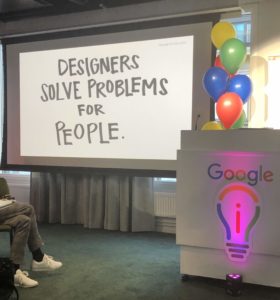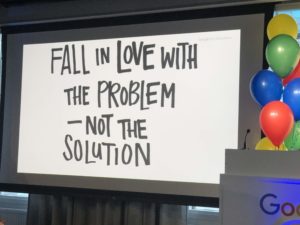Lessons from #GoogleEI #SWE19: Agency
By Lynne Herr
“In Google’s experience, innovation happens when you create the right environment, hire the right people, and get out of their way.”
 Simply put, “agency” gives employees control over their own work. In its guide, Foster an Innovative Workplace, Google advises to “allow employees to define their own work as much as possible” to nurture a culture of innovation. In a practical sense, that means no one tells you what to do or when to do it. You can work from multiple locations and spaces. Workspace is designed to be flexible and is in high demand. Each employee schedules space to meet their own needs – if you schedule a room for an hour, you’re trusted to need the room for an hour and be out of it on time so the next scheduled group has access to needed space.
Simply put, “agency” gives employees control over their own work. In its guide, Foster an Innovative Workplace, Google advises to “allow employees to define their own work as much as possible” to nurture a culture of innovation. In a practical sense, that means no one tells you what to do or when to do it. You can work from multiple locations and spaces. Workspace is designed to be flexible and is in high demand. Each employee schedules space to meet their own needs – if you schedule a room for an hour, you’re trusted to need the room for an hour and be out of it on time so the next scheduled group has access to needed space.
Tied to agency, employee performance is not measured by the amount of time someone shows up at the office, but by reaching objectives and key results (OKRs). At Google, OKRs are set at company, team, and individual levels each quarter. OKRs communicate where you’re headed and how progress will be measured. Do individuals and teams always meet their goals? No. But if they don’t, “leaders regularly explain why they didn’t fully achieve their stated goals, what they’ve learned, and what they plan to do next to move forward. Modeling failure in this way sends a powerful message to everyone in the company that it is OK to fail so long as you learn from it, share what you’ve learned, and make plans to do better.”
What does agency look like in education? How might we allow teachers and students agency toward reaching learning goals (our version of Google’s OKRs) set by state and national forces outside the school or individual classroom? What would teacher agency look like for professional learning goals?

